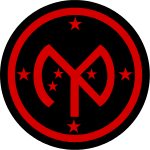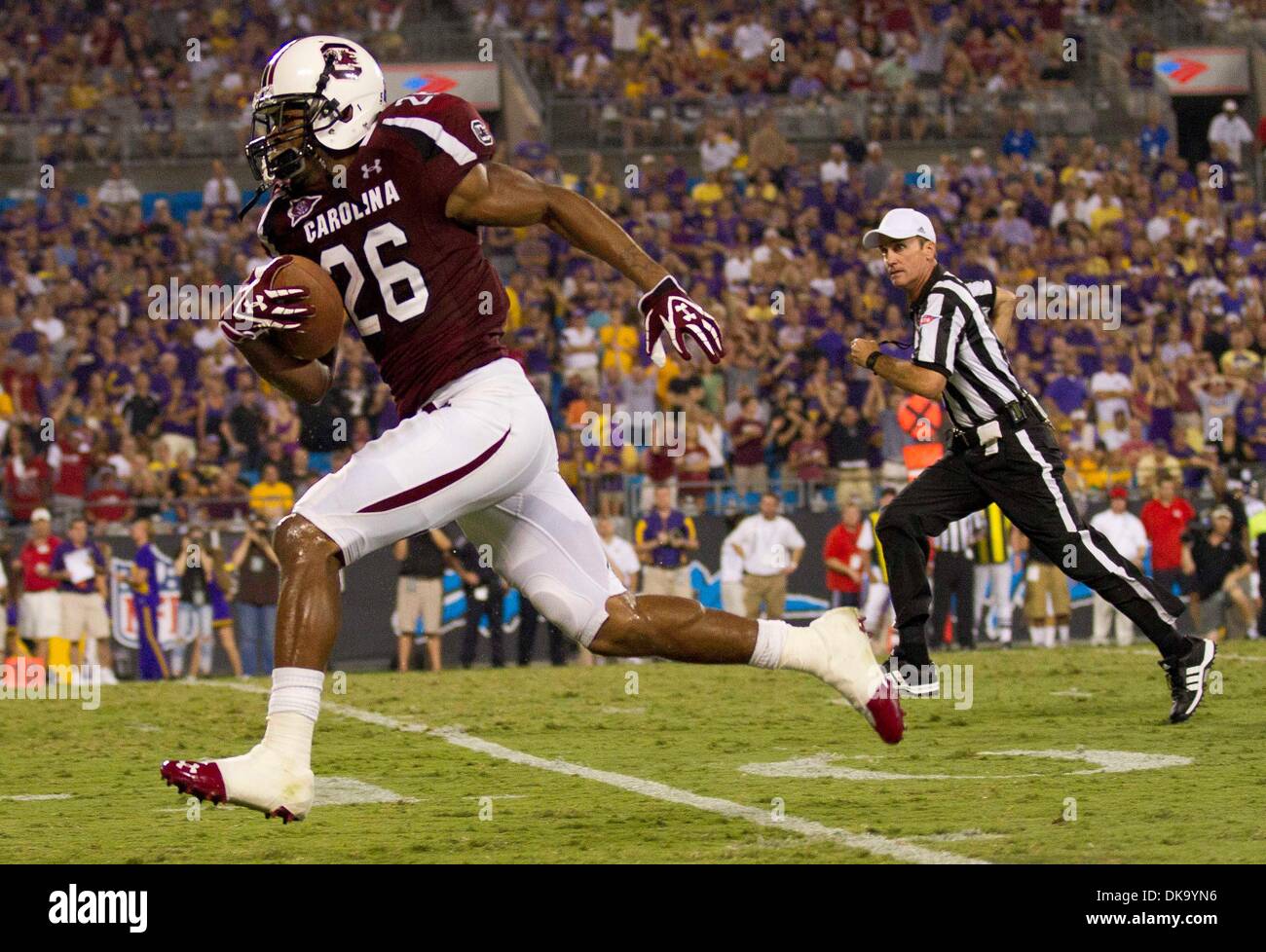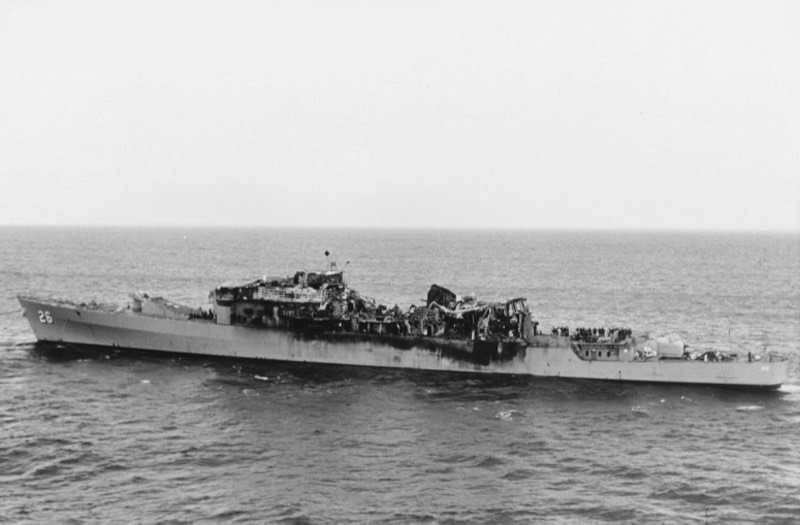Collision, fire, and reconstruction
Belknap was severely damaged in a collision with the aircraft carrier
John F. Kennedy on 22 November 1975 off the coast of Sicily. A fire broke out on
Belknap following the collision, during the fire her aluminum superstructure collapsed after it was weakened by the heat. Seven sailors were killed on
Belknap and one on
John F. Kennedy.
Shortly after the fire began, boats from other vessels operating with
John F. Kennedy and
Belknap began to pull alongside the burning ship, often with complete disregard for their own safety. The guided missile destroyer
Claude V. Ricketts and destroyer
Bordelon moved in on both sides of
Belknap, their men directing fire hoses into the amidships area that the stricken ship's crew could not reach.
Bordelon was also badly damaged in a collision with
Kennedy the following year which forced her removal from service.
Claude V. Ricketts moved in and secured alongside
Belknap's port side, and evacuated the injured while fragments from exploding ammunition showered down upon her weather decks. The frigate
Pharris closed in the carrier's starboard side to provide fire-fighting assistance. Ammunition from
Belknap's three-inch ready storage locker, located amidships, cooked off, hurling fiery fragments into the air and splashing around the rescue boats. Undaunted, the rescuers pulled out the seriously wounded and delivered fire-fighting supplies to the sailors who refused to surrender their ship to the conflagration.
The ammunition ship
Mount Baker was involved later in the rescue and salvage of
Belknap, escorting her to an ammunition depot and then providing electric and water services as
Mount Baker's Explosive Ordnance Disposal team retrieved all of the remaining ammunition from
Belknap.
Mount Baker also took aboard most of
Belknap's crew until they could be transferred to a way station for re-assignment.
The fire and the resultant damage and deaths, which would have been less had
Belknap's superstructure been made of steel, helped persuade the US Navy to pursue all-steel construction in future classes of surface combatants. However, in 1987 the New York Times cited cracking in aluminum superstructures such as what occurred in the
Oliver Hazard Perry-class frigates, rather than fire, as the reason the Navy returned to steel on some ships.
The first USN combatant ships to revert to all steel superstructure were the
Arleigh Burke-class, which were commissioned beginning in the 1990s.
Belknap was reconstructed by the Philadelphia Navy Yard from 30 January 1976 to 10 May 1980. Since the hull was still in good condition the Navy decided to use this as a test platform for the
Aegis-class cruiser electronics and updated weapons systems. Until the
Aegis-class cruisers came along
Belknap was one of the most powerful warships in the world and saw service in Beirut as part of the multinational peacekeeping force, becoming the first ship to fire on an enemy since the Vietnam War. It was the ship's Naval Tactical Data Systems' (NTDS) reliability during this time in Beirut which was named as the defining reason that the
Belknap was chosen as the Sixth Fleet flagship.






_bomber_(19759078469).jpg/800px-Sikorsky_Ilya_Muromets_S-27_E_(Yeh-2)_bomber_(19759078469).jpg)
_August_23_1935.jpg/1280px-USS_Northhampton_(CA-26)_August_23_1935.jpg)


_at_anchor_in_Ulithi_Atoll_on_24_November_1944.jpg)

.jpg)



_underway_in_the_Mediterranean_Sea_on_21_July_1992_(6480605).jpg/1920px-USS_Belknap_(CG-26)_underway_in_the_Mediterranean_Sea_on_21_July_1992_(6480605).jpg)


